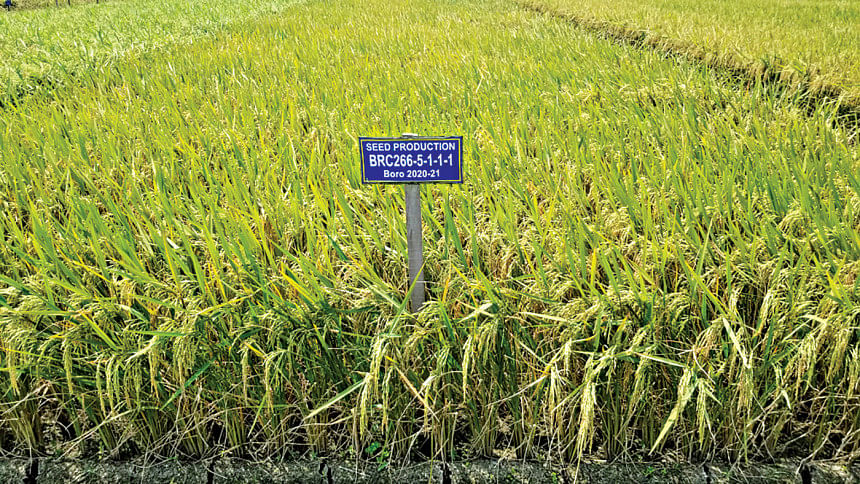High-yielding rice offers new hope

After years of testing, the high-yielding rice variant "BRRI dhan 105" was given approval for commercial production in Boro season by the National Seed Board on Thursday.
The new variant, developed by Bangladesh Rice Research Institute (BRRI), has a low glycemic index (GI) score, meaning it causes a slower rise in blood sugar levels which is good for diabetic patients.
"Doctors prescribe bread instead of rice to diabetic patients to keep blood sugar level in control. Unlike other high GI rice, this rice [BRRI dhan 105] slows down digestion which means a slower glucose release," said Md Alamgir Hossain, chief scientific officer and head of the Genetic Resources and Seed Division at BRRI.
The GI ranks food on a scale from 0 to 100. The scores indicate the effect of the food on blood sugar levels.
The GI separates food containing carbohydrates into three general categories -- high (70 and above), medium (56-69), and low (55 and lower).
The BRRI dhan 105 has a GI score of 55.
Khandakar Md Iftekharuddaula, head of BRRI's Plant Breeding Division, said BRRI dhan 28 and BRRI dhan 29 are cultivated during the Boro season in about 40 percent of rice fields.
BRRI dhan 28 and BRRI dhan 29 have GI scores of 70.96 and 62.36 respectively.
The average cost of producing a kilogramme of rice is Tk 27.10; the BRRI dhan 105 will cost the same.
"It [BRRI dhan 105] has opened new prospects for farmers as low GI rice has huge demand in both international and local markets," Iftekharuddaula said.
There are three more varieties that have a low GI score namely, BR-16 with 52.4, BRRI-46 with 53.1, and BRRI-69 with 54.9.
BR-16, locally known as Balam, got approval from the National Seed Board in 1983.
Some big companies still cultivate Balam in Dinajpur's Parbatipur on a small scale as it is in demand among a certain group of people, said Iftekharuddaula, also a chief scientific officer at BRRI.
The other two varietiesare also not cultivated on a large scale, he added.
The BRRI dhan 105 surpassed Balam in terms of productivity and life cycle.
The average grain yield of BRRI dhan 105 is 7.6 tonnes per hectare compared to 6 tonnes per hectare of Balam rice.
It takes around 155 to 160 days for farmers to harvest Balam rice, while for BRRI dhan 105 it takes 148 days.
This rice was first cultivated in 2006 in Cumilla on a test basis. Its yield and adaptivity were tested in 2017 and 2018 at the farmers' level.
The National Seed Board on Thursday also gave approval to BRRI dhan 106, a high-yielding rice variety suitable for non-saline tidal submergence areas.

 For all latest news, follow The Daily Star's Google News channel.
For all latest news, follow The Daily Star's Google News channel. 



Comments